Colca Canyon and Lake Titicaca
One of the joys of travel are the surprises, big and small, that occur every day when you are visiting new places. And Peru, probably more than any other country we’ve been to, has been full of surprises. For instance, who knew that the principal tree in Peru, even up to 4,000 metres, is the good ol’ Aussie gum tree. We also didn’t know that the Peruvian coast is one long, deep and desolate desert, by some reckoning the driest desert on earth. We also thought the Andes would be a long string of jagged snow-capped peaks with beautiful glaciers. Well, those do exist but most of the high-altitude areas we’ve visited are green rolling open plains. We love those kinds of surprises!
We left the land of the Incas – in itself a wonderful surprise – and crossed the high plains to Colca Canyon, said to be one of the deepest canyons in the world (twice as deep as the Grand Canyon!). To get there involved climbing up onto the high Andean plains, camping at 4,340 metres and spending virtually all the following day above 4,000 metres. As our GPS led us slightly astray it included an unexpected and spectacular visit to the Three Canyons area which was a highlight of the day.
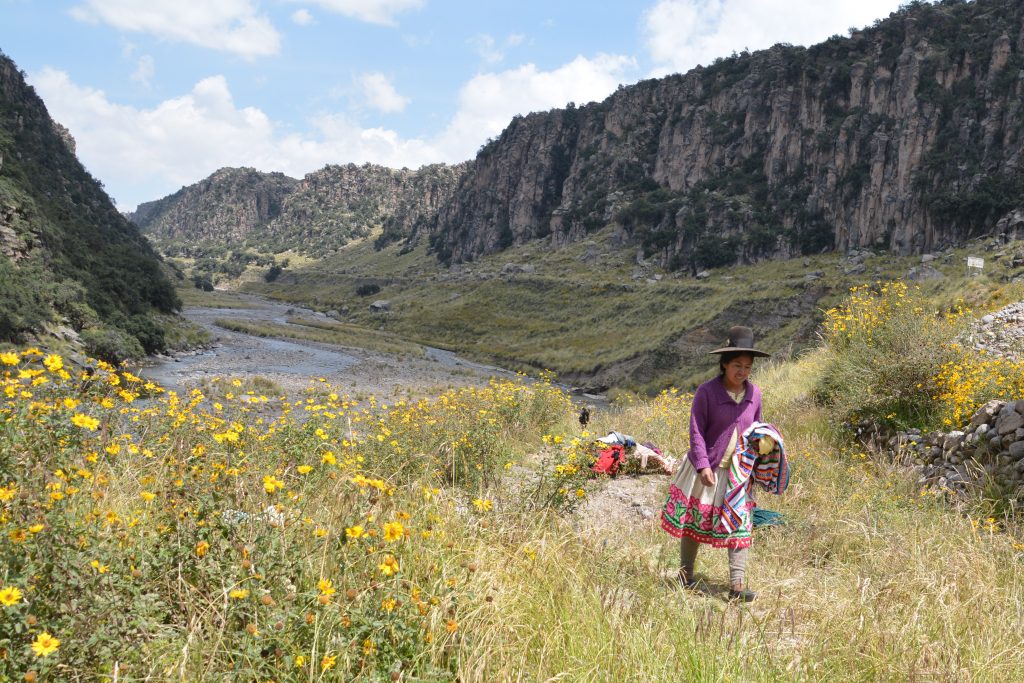
A young woman goes about her business – it would be fantastic to speak her local Quecha language and hear more about her life
Away from canyons the vast horizon-stretching plains were stunningly beautiful, open rolling hills, clear cold creeks running everywhere, mixed herds of llamas, alpacas, sheep and even some cattle shepherded by men and women in traditional dress who spend their whole lives minding their small herds in these remote open pastures.
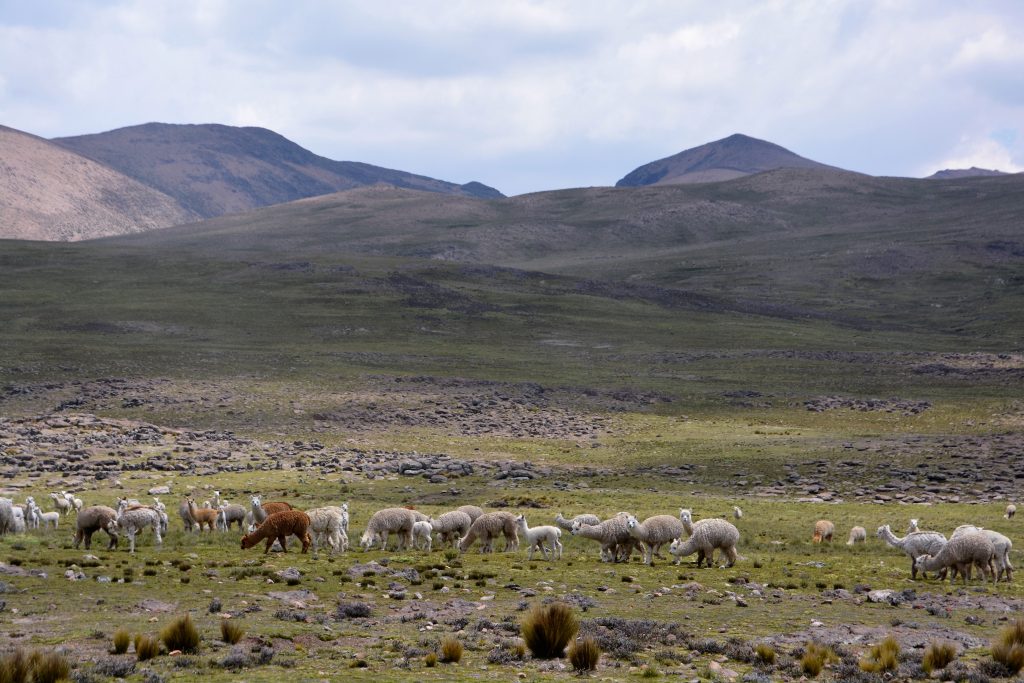
Llamas and alpacas are the only animals that can live at these high altitudes and they are vital for the lives of those people who live up there
But the roads were atrocious, single dirt tracks, deep washouts, long muddy sections, uncertain water crossings and bone-jarring potholes. Travel was slow going but we did finish the day driving on the south rim of the famed Colca Canyon, taking in the views of the deep cut in mother earth caused by the Colca River and camping at one of the lookouts for the condors which nest in the cliffs and soar on the winds that flow through the deep chasms.

Colca Canyon is said to be one of the deepest in the world – it started out more modestly but still featured some great views
In the morning we moved down to the prime viewing platform under a perfect blue sky and watched with awe as these majestic condors used the thermal air currents of the canyon to float below, around and above us. This was great stuff, the dramatic deep canyon as a background, the condors floating by us without a care in the world, at one stage as many as 20 of them in the air or perched nearby. We struggled to drag ourselves away after an hour and a half.

A mature adult – recognisable with their distinctive black and white colours – and a juvenile soar through the air below us
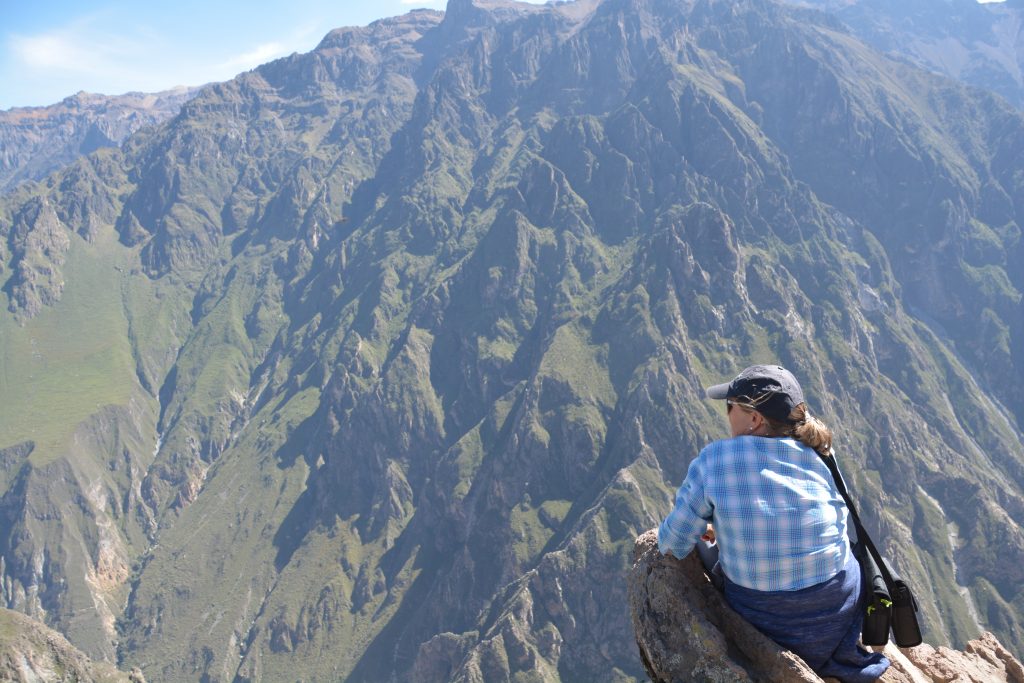
Condor hunter – Julie looks out at the scene below us – we spent almost two hours watching these majestic birds cruising around us
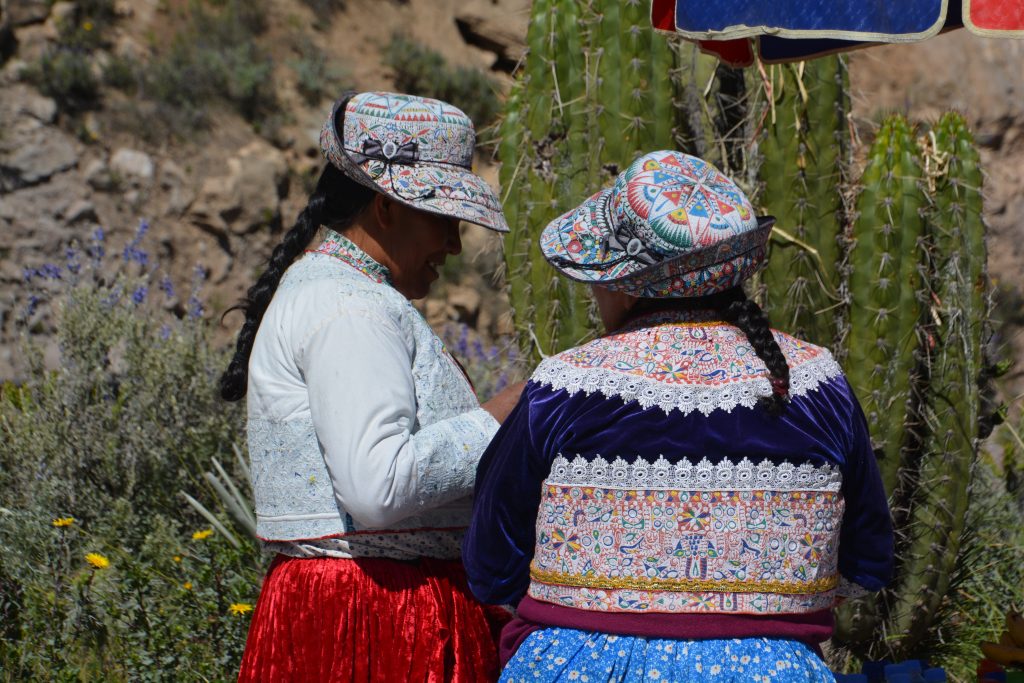
One of the great curiosities of Peru is the different styles of women’s hats in the different regions – we hadn’t seen this one before
The road north to the city of Puna on the shores of Lake Titicaca started with a climb up and over the mountains, reaching a numbing height of 4,910 metres (16,100 feet), our highest point on this trip. From this saddle we could see numerous snow-capped peaks over 6,000 metres and wild vicunas roaming about. Our GPS then led us astray again, directing us to negotiate some diabolical dirt tracks in an uber-remote area and making a couple tricky river crossings. But we loved crossing the beautiful high plains, cursed our GPS and laughed at our good fortune for being there.
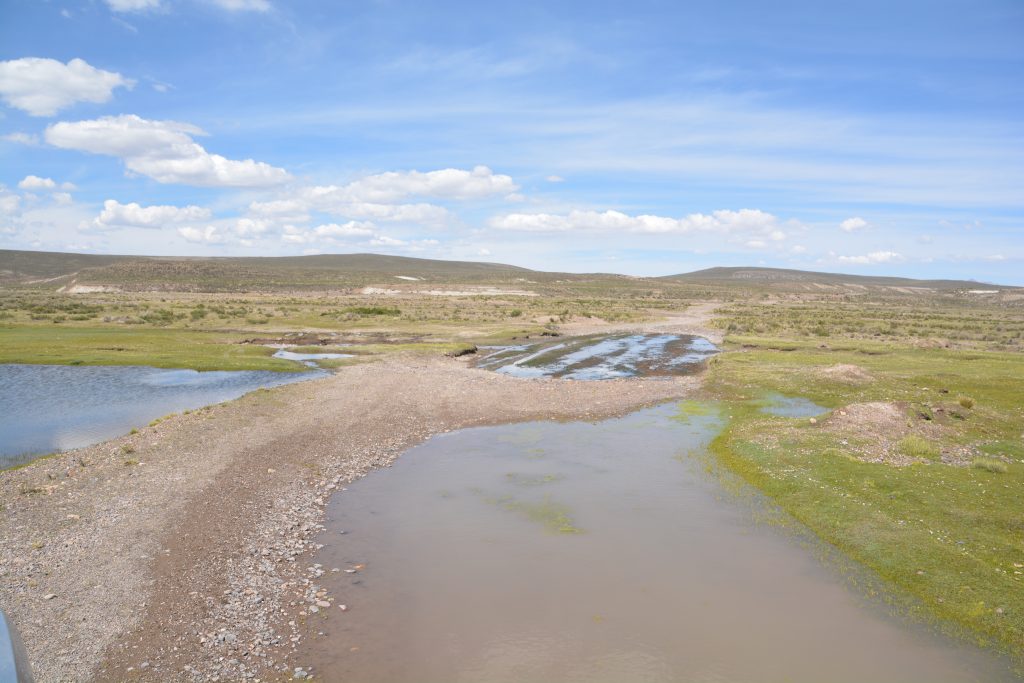
The GPS did us a favour by taking us on some crazy tracks so we could experience rough roads and fascinating remote scenery
Puna is the major town on Lake Titicaca, the largest navigable lake in the world at 3,800 metres (12,500 feet). Amongst other things the lake is famous for the unique and fascinating lives of the indigenous people living on some of its islands. The next morning we had to organise a oil and filter change for Tramp in a local pseudo-garage before catching a ferry to the island of Uros.
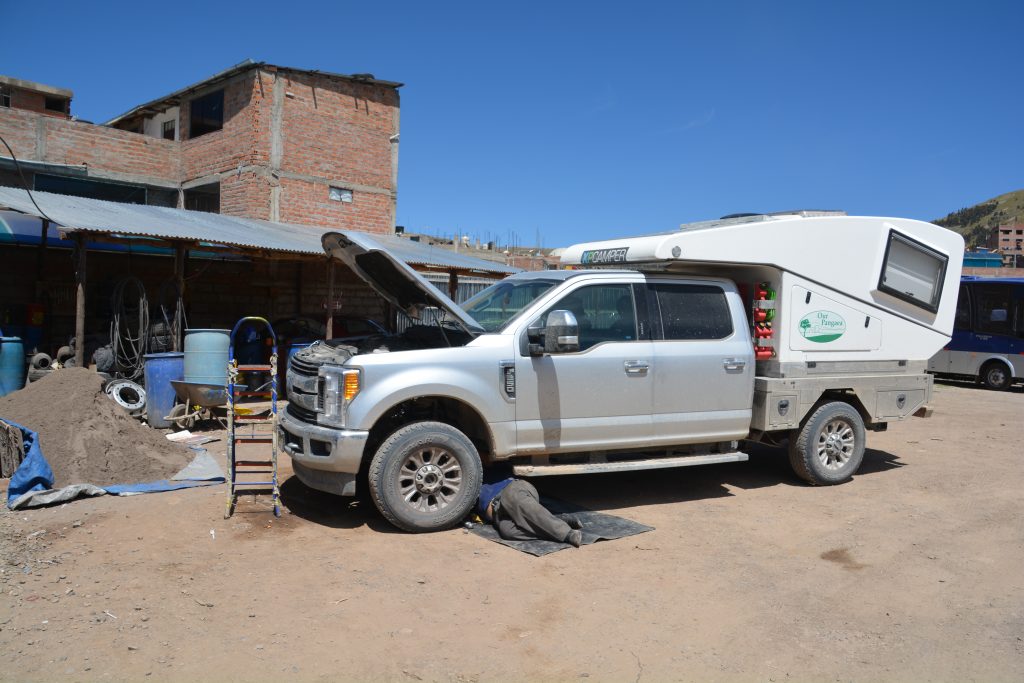
Not up to Ford standard – Tramp needed an oil change and a local mechanic was happy to crawl underneath and help us out
Calling Uros an island is a bit of a stretch because the people who live there actually live on floating islands made of the reed that is so prevalent in the shallows of the lake. Not only are their islands made of reed but also their houses, furniture, boats and almost everything else. These people, who have lived on the islands for 500 years, have forged out a unique but somewhat harsh life as fishermen who traded with the mainland. Today they also host tourists and sell handicrafts.

Uros is actually a series of floating islands made of reed strapped together where people live in their reed huts

Everything seemed to be made of this highly durable reed – even large boats and attractions for the tourists – which they harvest in the lake
We visited a couple of islands of the Uros group and enjoyed the afternoon out on the water. I mean after all, it is Lake Titicaca, the skies were blue, the distant mountains were covered in snow and we didn’t have to sleep in a damp floating reed house that night. Instead we motored eastward along the coast of the lake and camped at the public pier of a small town called Juli.
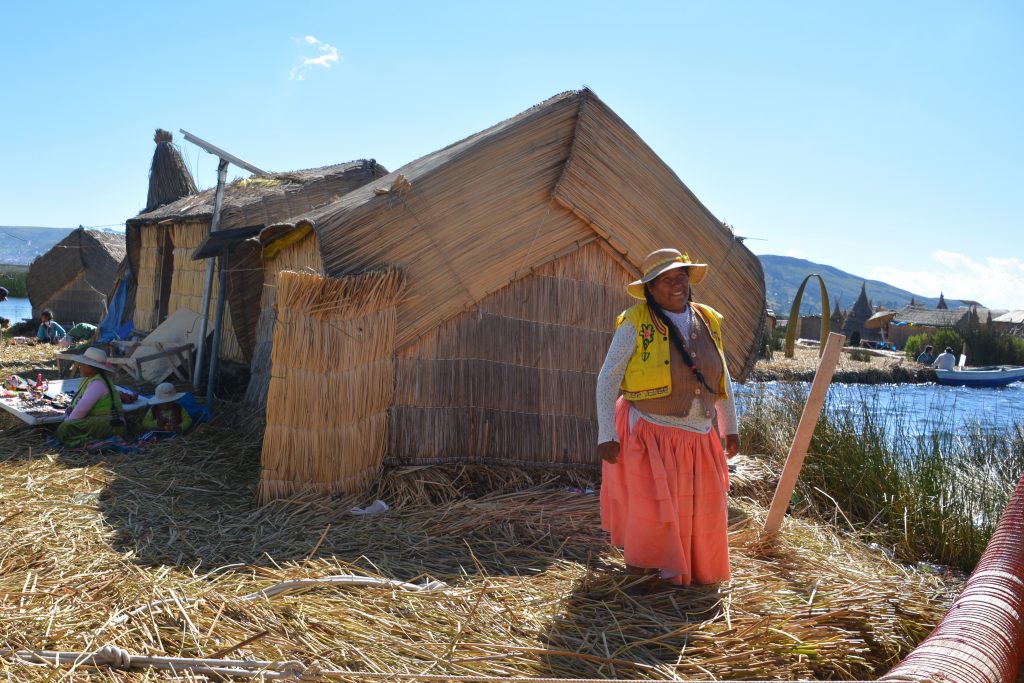
This woman invited us into her home which was only big enough for a small bed, a cooking area and space for us to sit down on her reed floor
Our time in Peru had come to an end. We enjoyed the diversity of this country with its long coastal desert, great beaches, stunning mountains, terrible roads and fascinating culture. Of course the highlight of our visit was famous Machu Picchu which lived up to all its expectations but we also enjoyed Lake Titicaca, the Nazca Lines, the Corillera Blancas and Colca Canyon. It was also a return trip for me which was fun and a bit of nostalgia. Peru has its issues, that’s for sure, but it is definitely a top drawer place to visit and we relished every moment.

The market of a little mountain village featured mainly different types of corn and a couple other grains
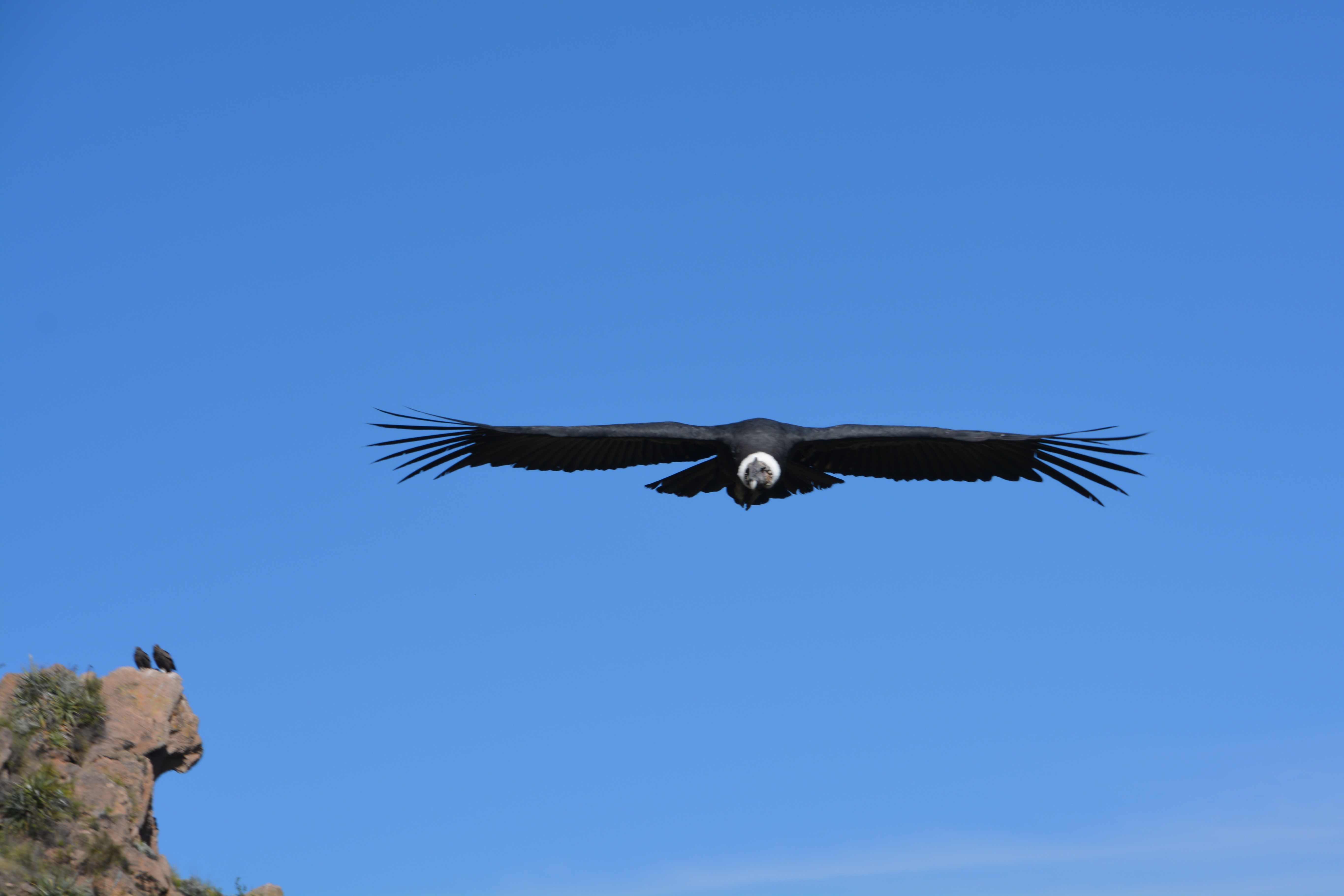









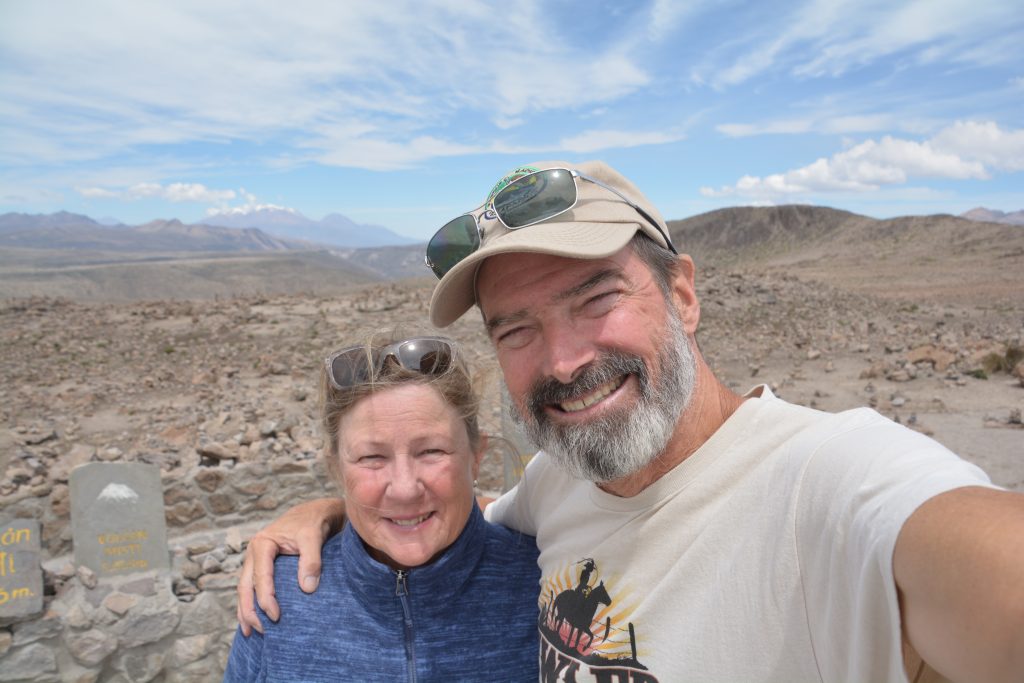


Hi Bill,
Been reading all of these updates since you left, amazing what you have done, will no longer share any stories regarding our travels around Australia, we cannot compete.. you are in a different league.
regards
Hi Greg and Kathryn,
Very kind, we’ve certainly had some fun on the road but we look forward to getting out in Australia with you as well. Cheers, Bill